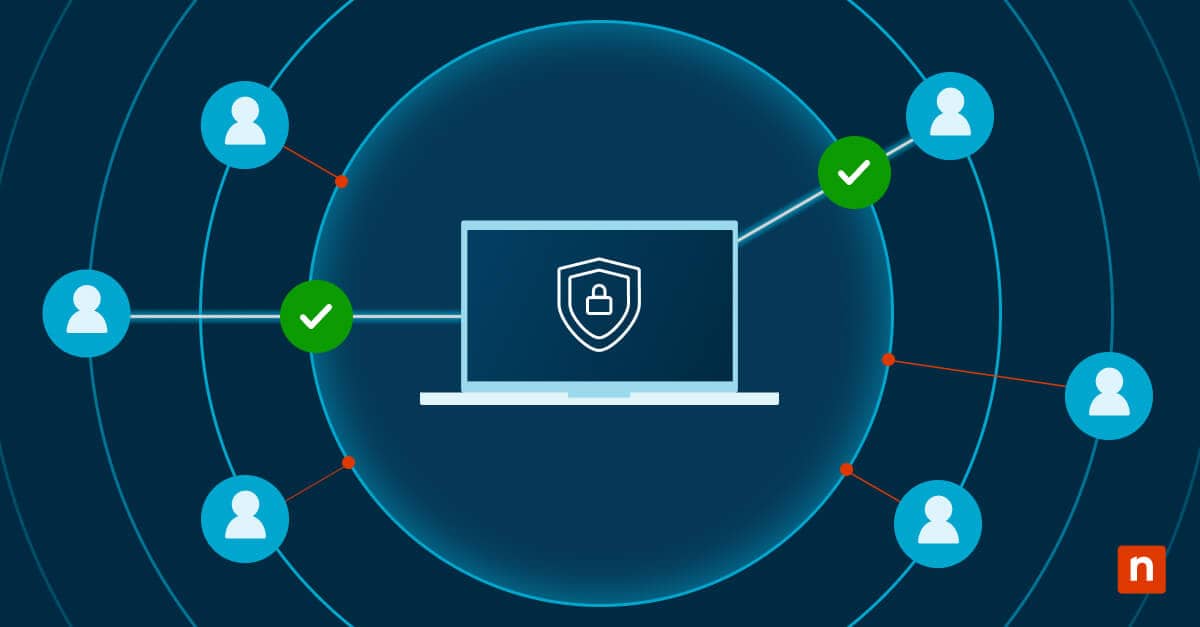As IT administrators, having a great degree of control over the apps in the devices you manage is essential to succeeding in your goals. This means monitoring which apps are installed in each device and being sure that they’re all functioning properly. There are many situations where you’re going to need to reset Windows UWP apps in order to minimize downtime and improve overall system performance.
Outdated apps are also security risks as they can act as backdoors for hackers to enter your system. Familiarizing yourself with the different methods for resetting UWP apps allows end users to continue their work with minimal interruptions.
What is a UWP app?
Universal Windows Platform (UWP) apps are applications that can be used on all Microsoft Windows devices. This includes a wide variety of devices, such as computers, smartphones, and video game consoles. These apps are also primarily available through the Microsoft Store.
A comprehensive guide to UWP app resets
UWP apps are an integral part of any device that runs Microsoft Windows. If you’re working with a Windows 10 computer, there’s a good chance that you’re using several of them every day in your daily workflow, whether it’s for productivity, office tasks, or even web development.
However, there are various scenarios where you will need to reset these apps. Sometimes you need to restore them to their default settings for a new user, or maybe you want to clear corrupted data from your app files to stop the application from malfunctioning. Whatever the case, here’s a comprehensive guide on how to reset UWP apps.
Requirements
If you’re using Settings to reset your UWP app, you will need a computer that has at least a Windows 10 14328 build. And for PowerShell-based resets, your Windows 10 computer needs to have a build of 20175 or later.
Also note that if you’re using PowerShell, you will also require administrator privileges and a basic familiarity of PowerShell scripts.
Method 1: Reset a UWP apps via Settings
This is the most straightforward method you can use to reset an application in Windows 10.
- Go to the Start Menu > Settings.
- Click Apps > Apps & features.
- Find the app you want to reset and click it > Advanced Options.
- Click Reset. A prompt box will open to confirm your decision. Click Reset.
- The app will reset now.
Method 2: Reset a UWP apps via PowerShell (Build 20175+)
Some apps can’t be reset through Settings, so you will need to do so using PowerShell.
Note: This is only available for computers with Windows 10 build 20175 and later.
- Go to the Start Menu, search for PowerShell, and open the program.
- Type this script into PowerShell: Get-AppxPackage *AppName* | Reset-AppxPackage (Replace “AppName” with the name of the app you want to reset).
- Press Enter.
- PowerShell will run the script, and the app should reset now.
Troubleshooting guide for resetting UWP apps
Windows PowerShell is an advanced tool, and copying the wrong string or inputting incorrect values may affect your entire system. Because of this, you might run into a few issues when using the program to reset apps.
Here are a few common troubleshooting scenarios you might run into while following this guide:
Reset-AppxPackage command not recognized
Make sure that you’re using Windows 10 build 20175 or later.
To check:
- Open the Start Menu > Settings > Update & Security.
- Click OS build info in the right sidebar under Related Links.
- Scroll down to Windows Specifications, and you’ll find the OS build under that.
If it is, make sure you’re running Windows PowerShell as an administrator. To do that, right-click on Windows PowerShell > Run as administrator.
The app continues to malfunction after reset
Check if there are system updates that can resolve the issue. You can also consider uninstalling and reinstalling the app.
Cannot find the app in PowerShell
Input Use Get-AppxPackage | Select Name in Windows PowerShell to see all the installed apps in the program. Look through the results and find the app that you want to reset. When you find it, you can now follow the steps provided in this guide.
Why would I reset a UWP apps?
There are several reasons why people might want to reset their apps. If the program is malfunctioning, resetting it might resolve its current issues and clear corrupted app data. Restoring the app to its default state might be especially useful for troubleshooting and figuring out where things went wrong.
Resetting apps can also be a powerful tool for apps in enterprise environments. In those situations, you would want to have a greater degree of control over the apps in your employees’ devices.
Frequently asked questions for Windows reset of UWP apps
Does resetting an app delete user data?
Yes. Resetting the app will remove all its data and restore it to its default settings.
Is the Reset-AppxPackage cmdlet available in all Windows 10 versions?
No. This feature only became available starting with Windows 10 build 20175. If you are using an earlier build, it’s best to use Settings to reset your apps.
Can I reset multiple apps simultaneously using PowerShell?
Yes. Create a Reset-AppxPackage script for every app you want to reset.
What if the app doesn’t have an Advanced options link in Settings?
Some apps may not support the reset feature through Settings. If that’s the case, consider using Windows PowerShell instead.
Final words on how to reset a UWP app in Windows 10
Resetting an app, whether through Settings or Windows PowerShell, is an invaluable tool for quickly resolving app issues on Windows computers. However, there are a few caveats. The method you use depends largely on your Windows 10 build, so double-check any system requirements before proceeding.
Doing it through Settings is a good option if you want a quick and straightforward method for individual app resets. PowerShell, on the other hand, is more useful for bulk resets or for situations where you’re unable to reset the apps through Settings.
If none of those work, you can also consider uninstalling and reinstalling the application. There are several methods you can use to manage different applications on your computer and resolving any issues they may encounter, and it’s important to know which method best fits your system.







